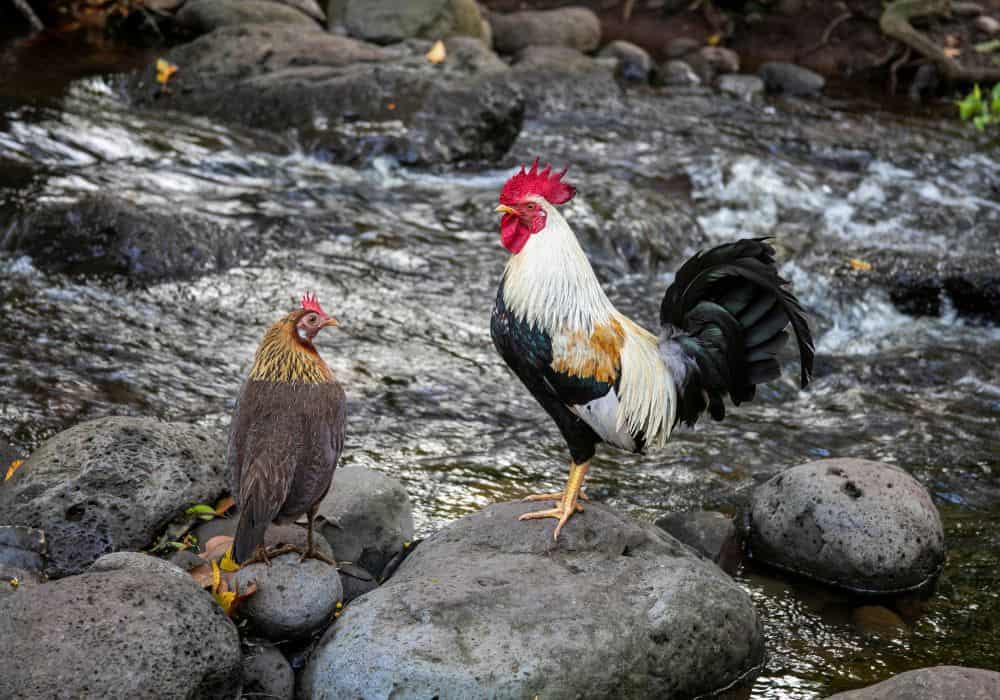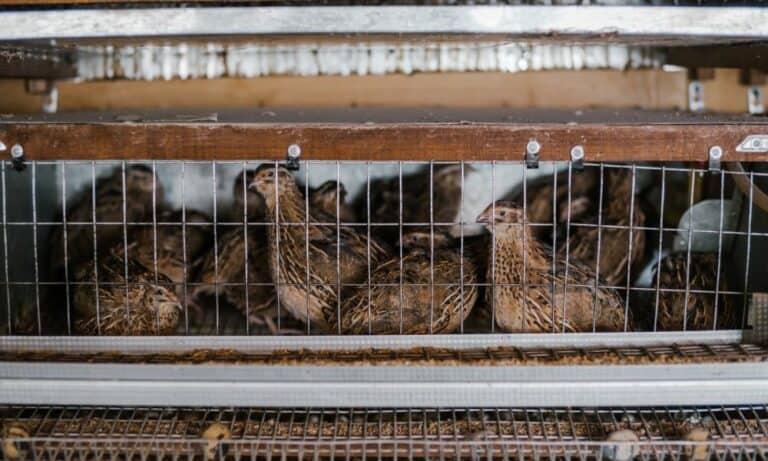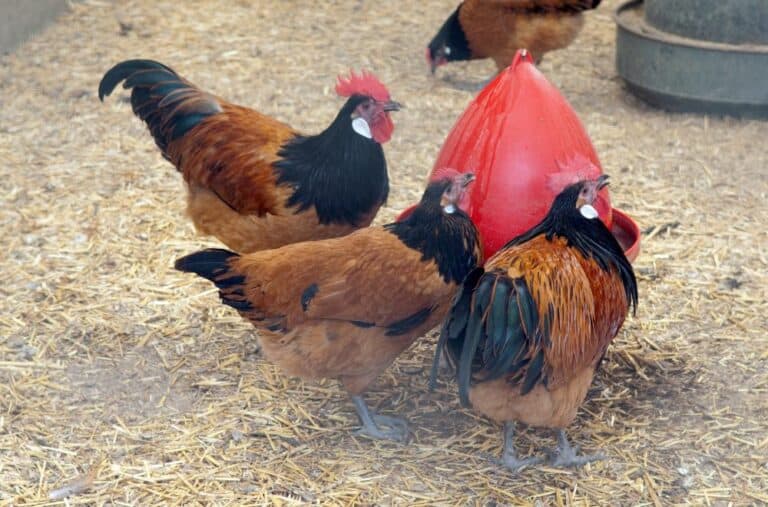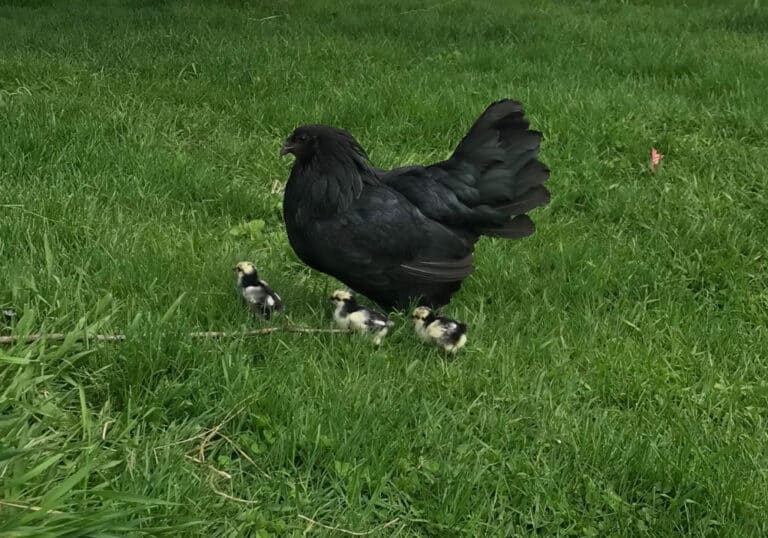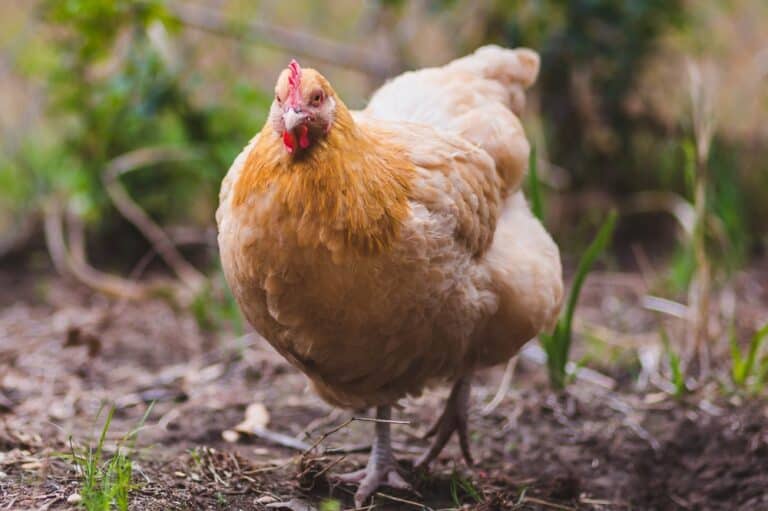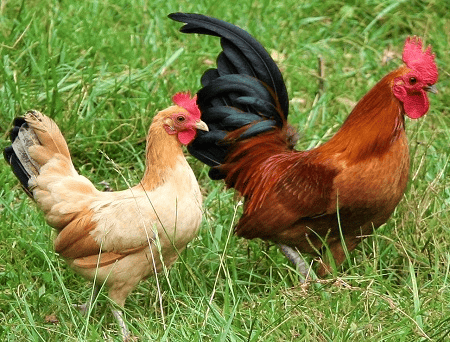Depending on where you live, the topic of feral chickens can either be completely new and unfamiliar to you or it may be something you’ve been hearing and reading about daily for years. As with any other type of wildlife, feral chickens are localized in certain areas depending on the environment there, however, in the places where they thrive they have become quite an unmanageable problem.
So, what is a feral chicken, really, why are there so many of them in some places, why are they a problem (and why they aren’t), and what can and should we do about them?
What are feral chickens, exactly?
If you’re just now hearing about feral chickens, you may think that these are just the wild chickens‘ ancestors of modern-day domestic chickens. It’s actually the opposite, however – feral chickens are the ancestors of former domestic animals that have escaped their homesteads and chicken coops (or have been released by their owners) and are now roaming free.
They are not dissimilar to their actual wild ancestors such as the Red Junglefowl, of course, because, as it turns out, it only takes a few generations for feral chickens to forget almost everything from their time in domestication and revert to their ancestral selves – in small groups with a few hens and their chicks, led by a cock.
Why are feral chickens something worth talking about, however, compared to other formally domesticated animals in the wild such as feral pigs?
While all feral animals can present certain problems to an extent, as they can significantly change the natural order in their new habitats, feral chickens are an especially notable case because of the very fast reproduction of these wild birds, the lack of natural predators in certain areas to help control the feral chicken populations, and other such factors which we’ll explore in more detail below.
Are feral chickens a problem and why?
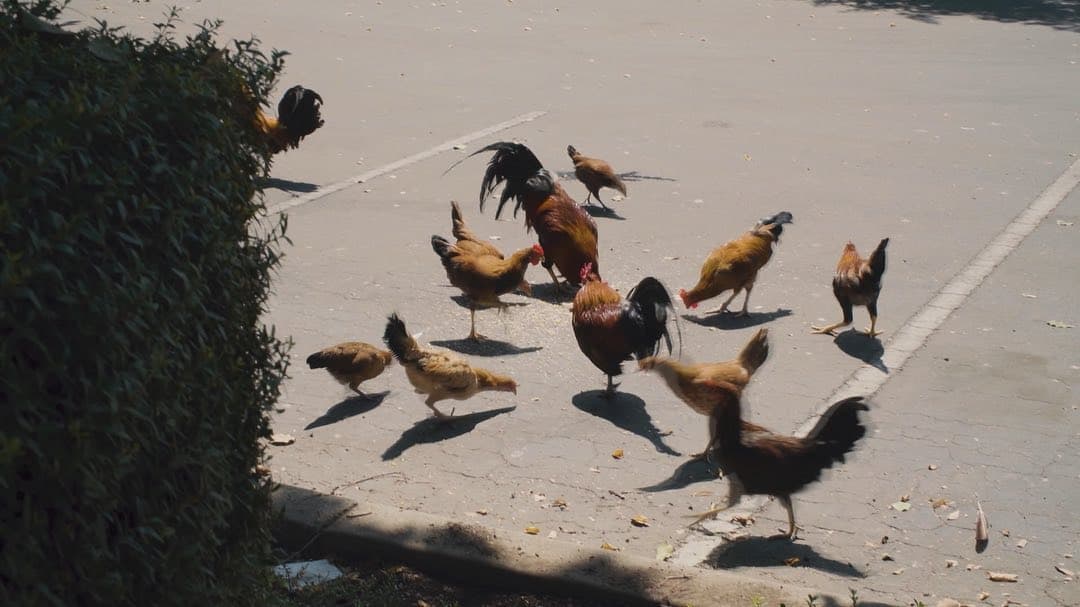
At first glance, chickens don’t sound like the type of animal one would consider “a pest”. In fact, as most chicken keepers know, chickens can be excellent pest-control animals as they eat a lot of actual pests such as insects and mice.
Nevertheless, virtually every animal can become a problem if its population is left unchecked – which, ironically is just how other animals feel about us too. With chickens, in particular, we’re talking about smaller and larger issues such as:
- The spread of diseases
- Roosters’ crows in the middle of the night or before dawn
- Traffic jams and accidents, often caused by either just a single hen crossing the road with her chicks or large flocks crossing together
- Throwing the environmental balance in some areas out of whack
- Pestering people and especially kids
- Getting inside people’s homes, cars, places of work, and even other places such as inside vending machines, sewers, and so on.
- Pestering tourists and restaurant clients for food, often getting onto tables or in restaurants’ kitchens
Most of these sound like just a nuisance on their own but the issue a lot of places are having is with the sheer scale of the feral rooster populations. Even just something as minor as midnight rooster crowing can become a major issue if we’re talking about tens and hundreds of thousands of birds.
The spread of diseases is also a genuinely major problem – both for us and for our domesticated birds that can come into contact with feral chickens.
Why are feral chickens rising in numbers across the world and where is the problem most severe?
The places around the globe that have been most affected by this feathery invasion include:
- In the US – the Hawaiian Islands, Florida, California, Louisiana, Puerto Rico, Georgia, the Virgin Islands, and Texas. Key West in Florida and Kauai in Hawaii face particularly significant problems with feral chickens as you can see in the video above.
- In Britain – Bermuda, the Cayman Islands, the British Virgin Islands, Suffolk, and Hampshire.
- In Central and Southeast and Oceania – Tel Aviv, Jaffa, Guam, New South Wales in Australia, as well as Port Chalmers and Niue in New Zealand.
But why are these places face so many issues with a bird that’s easily domesticated, kept in coops, and farmed in factories by one of the largest industries on the planet?
The answer is a combination of factors such as:
- These locations offer the perfect environment for feral chickens to thrive in – warm weather, lack of natural predators, and a combination of tightly packed urban, rural, and forest environments that chickens can quickly and easily switch between.
- Huge numbers of formerly domesticated chickens had been released in these places in the past – sometimes going as far back as centuries ago with the initial colonization.
- Poor poultry farm control and management leads to a steady number of escaped domesticated chickens that join their feral cousins.
- The rising numbers and magnitude of hurricanes year after year clashes with the rising size of poultry farms and it’s getting more and more common for hurricanes to literally blow chickens out of large farms and into the wild.
The 1982 (Iwa) and 1992 (Iniki) hurricanes that hit Kauai, Hawaii are an often-cited example of that as they led to incalculable numbers of domesticated chickens flying off and mixing with the local wild Polynesian chickens. - Residents feeding feral chickens is also a significant contributing factor as that not only helps keep their populations up but also teaches them to see people as sources of food and to stay and lay their eggs in cities rather than in the wild.
- Lack of consensus on how to deal with the problem as governments and communities often halt to a standstill when discussing and voting on the possible solutions.
So, as you can see, feral chickens are not just a present issue but they are likely here to stay for quite a while as a lot of the reasons for their existence aren’t exactly solvable – feral chickens are just far too adaptable and intelligent to be comprehensively stopped by any measure.
What most places are looking into instead is just limiting the spread of feral chickens into residential areas and leaving them be in non-residential spaces such as fields and forests. This isn’t easy either, however.
What can we do about feral chickens?
A lot of things have been attempted with feral chickens but nothing has been all that successful so far. Mass extermination is clearly not an option as it’s not only brutally inhumane but it can also never be completely effective either. That’s why most governments have made it illegal for people to take matters into their own hands and shoot feral chickens on sight.
Instead, the most-used practice is the setting of traps in residential areas and moving the feral chickens into places where they not only don’t cause problems but can even be utilized as pest control or be re-domesticated – nature reserves of sorts.
The problem with this approach is that it’s very time- and resource-intensive. With feral chicken populations often getting to the tens and hundreds of thousands, catching them in traps one by one to ship them out of town is just not efficient enough.
Another problem with this is that it can only – or mostly – be done on public land as we can’t control what happens on people’s private property. That’s why people are often offered bird cages and traps, and are encouraged to use them on their private property to help control the feral chicken population.
Bird birth control feeds such as OvOControl, Nicarbazin, and others have also been developed in an attempt to make feral hens infertile or, at least, less fertile. Such poultry birth control hasn’t been all that successful so far, mainly because it’s difficult to get enough of the feral chickens to eat it when they are foraging almost anything and everything they see. Still, it may hold the key to this problem in the future.
In conclusion
Feral chickens are an ongoing problem in many places and may very well remain an unsolved problem for years to come. Still, as far as pests go, they are not the worst of the worst and can even be beneficial when utilized properly.
If a major long-term solution is to be found, it will likely utilize some form of safe large-scale bird birth control but it’s not yet clear exactly how that will be applied. In the meantime, governments in most of the areas struggling with feral chicken invasions are strongly advising people not to feed and socialize the birds so that they can at least stay away from residential areas.

